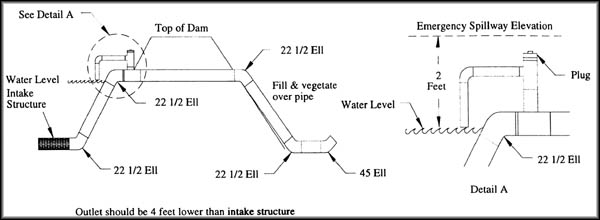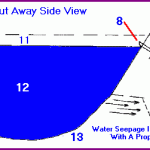Building a Siphon Pipe Spillway for a Pond: A Comprehensive Guide
If you have a pond on your property, maintaining its water levels and ensuring proper drainage is essential for its health and longevity. One effective way to manage water levels and prevent overflow is by installing a siphon pipe spillway. In this article, we will discuss the step-by-step process of building a siphon pipe spillway for a pond. From understanding the concept of a siphon to gathering the necessary materials and executing the construction, we will cover everything you need to know to successfully build a siphon pipe spillway for your pond.
Understanding the Concept of a Siphon
Before delving into the construction process, it’s important to grasp the basic principles behind a siphon. A siphon is a simple device that uses atmospheric pressure to draw liquid from a higher level to a lower level. In the context of a pond, a siphon pipe spillway creates a controlled path for water to flow out of the pond when the water level exceeds a certain threshold, thereby preventing flooding and maintaining a stable water level.
Gathering the Necessary Materials
To build a siphon pipe spillway for your pond, you will need the following materials:
1. PVC Pipe: Select a sturdy PVC pipe with a diameter suitable for the water flow volume of your pond.
2. PVC Elbows and Connectors: These components will be used to create the desired configuration for the siphon pipe.
3. Pipe Glue: To secure the connections between the PVC components.
4. Waterproof Sealant: This will be used to ensure watertight seals at critical junctions.
5. Shovel: For digging the trench where the siphon pipe will be installed.
6. Measuring Tape: To accurately measure and cut the PVC pipe to the required lengths.
7. Level: To ensure that the siphon pipe is installed with the proper slope for water flow.
Step-by-Step Construction Process
Now that you have gathered the necessary materials, let’s walk through the step-by-step process of building a siphon pipe spillway for your pond:
Step 1: Determine the Ideal Location
The first step is to identify the optimal location for installing the siphon pipe spillway. Choose a spot where the water can easily flow out of the pond without causing erosion or other adverse effects on the surrounding landscape.
Step 2: Dig the Trench
Using a shovel, dig a trench from the designated location to the desired outlet point. The trench should have a gradual slope to facilitate the smooth flow of water through the siphon pipe.
Step 3: Cut and Assemble the PVC Pipe
Measure and cut the PVC pipe to the appropriate lengths based on the dimensions of your pond and the trench. Assemble the PVC elbows and connectors to create the desired configuration for the siphon pipe, ensuring that it will fit seamlessly into the trench.
Step 4: Install the Siphon Pipe
Carefully place the assembled PVC pipe into the trench, making sure that it follows the intended slope for efficient water flow. Use the level to confirm that the pipe is positioned correctly.
Step 5: Seal the Connections
Apply pipe glue to secure the connections between the PVC elbows and connectors. Additionally, use waterproof sealant to create watertight seals at critical junctions to prevent leaks.
Step 6: Test the Siphon Pipe
Once the siphon pipe is installed and sealed, fill the pond with water to test the functionality of the spillway. Observe the water flow through the siphon pipe and ensure that it effectively maintains the water level within the desired range.
Step 7: Monitor and Adjust
Regularly monitor the performance of the siphon pipe spillway to ensure that it is functioning as intended. Make any necessary adjustments to the slope or configuration of the siphon pipe to optimize its efficiency.
Benefits of a Siphon Pipe Spillway
Building a siphon pipe spillway for your pond offers several benefits, including:
– Preventing Overflow: By providing a controlled outlet for excess water, a siphon pipe spillway helps prevent pond overflow during periods of heavy rainfall or snowmelt.
– Maintaining Water Levels: The spillway allows for the efficient management of water levels, promoting a balanced ecosystem within the pond.
– Erosion Control: By directing water flow away from vulnerable areas, the spillway helps mitigate erosion and protects the surrounding landscape.
In conclusion, building a siphon pipe spillway for your pond is a practical and effective way to manage water levels and prevent overflow. By following the step-by-step process outlined in this guide and understanding the underlying principles of a siphon, you can successfully construct a spillway that enhances the functionality and resilience of your pond.
Remember to consult local regulations and seek professional advice if needed before undertaking any construction projects related to water management. With careful planning and execution, you can create a siphon pipe spillway that contributes to the overall health and sustainability of your pond ecosystem.





